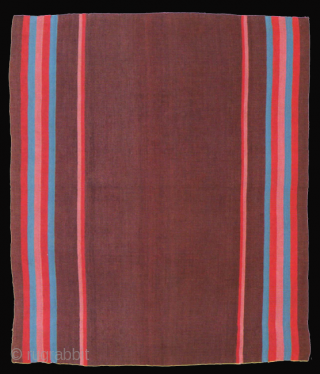Evidence suggests that the Lake Titicaca Basin and the Altiplano region of Peru, Bolivia and Chile was among the earliest centers of wool production and weaving in the Andes. Alpacas and llamas were domesticated here before 2500 bc. The indigenous Aymara speaking populations were historically the largest and most important of the altiplano pastoralists. Utilizing the excellent fiber provided by their carefully bred animals, the Aymara created magnificant ceremonial textiles from a very early time. The ritual use of these textiles was and continues to be of great importance within Aymara culture.
The Aymara Indians have traditionally inhabited a region known as the Altiplano. a vast, rugged, high altitude basin sandwiched between two mountain ranges of the Andean cordillera with snow capped peaks reaching to 22,000 feet, the altiplano has a base elevation of 12,500 feet above sea level. It is one of the world’s harshest and loftiest habitation zones.
Long before the coming of the Inca to the region the Aymara Indians had been living a prosperous existence based on subsistence farming, fishing and the herding of vast numbers of llamas and alpacas. After the Spanish conquest of South America many of the Pre-Columbian traditions and practices of the indigenous Aymara populations were prohibited, but the weaving of fine cloth persisted. Today, it is understood that for the Aymara, textiles were the primary art form.
Woven primarily by women, Aymara textiles were made from alpaca fiber and are, for the most part, articles of clothing for ceremonial use. The Aymara believe that the weaving of such cloth is a sacred obligation. Creating textiles of this superior quality required a nearly unprecedented level of skill and ingenuity in all aspects of the spinning, dying weaving process. For the Aymara, regional even familial differences in costume were quite distinct, therefore a garment’s design, colors and weave communicated much about the wearer to those he encountered. Because of this, there are virtually no commercial factors that influence design in textile production.
The best Aymara weavings are exquisitely sophisticated textiles. Simple at first glance, they captivate with a timeless beauty that has a perceptible spiritual quality to it. Color is key in these weavings and an innate understanding of the correct sense of proportion coupled with remarkable weaving and lustrous fiber elevates these rare and beautiful textiles to the level of fine art.
- Home
- Antique Rugs by Region
- Category
- Profiles
- Post Items Free
- Albums
- Benaki Museum of Islamic Art
- Budapest: Ottoman Carpets
- Gulbenkian Museum
- Islamic Carpets. Brooklyn
- Islamic Textiles. Brooklyn
- Konya Museum: Rugs
- MKG, Hamburg
- MMA: Caucasian Carpets
- MMA: Mamluk Carpets
- MMA: Mughal Indian Carpets
- MMA: Ottoman Carpets
- MMA: Safavid Persian Carpets
- MMA: Turkmen Rugs
- McCoy Jones Kilims
- Ottoman textiles. Met
- Philadelphia Museum
- Rugs and Carpets: Berlin
- Seljuqs at the Met
- TIEM, Istanbul: Carpets
- V&A: Classical Carpets
- Vakiflar Carpets: Istanbul
- Baluch Rugs: Indianapolis
- Gallery Exhibitions
- Jaf an Exhibition
- Alberto Levi Gallery
- Andean Textile
- Christie's London: 2016
- Francesca Galloway
- HALI at 40
- ICOC Washington, DC 2018
- Jajims of the Shahsavan
- London Islamic Week April, 2018
- Mongolian Felts
- Navajo Rugs: JB Moore
- Persian Piled Weavings
- SF Tribal & Textile Art Show 2020
- SF Tribal 2019
- Sotheby's: C. Alexander
- Turkish Prayer Rugs
- Turkmen Main Carpets ICOC 2007











